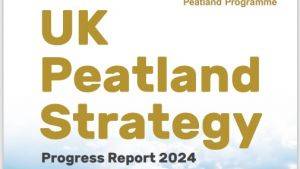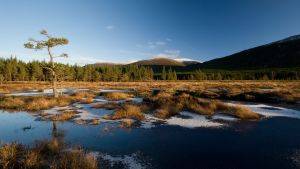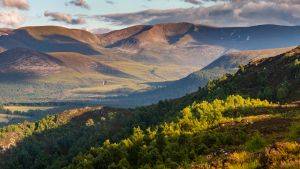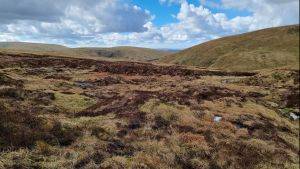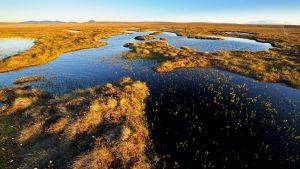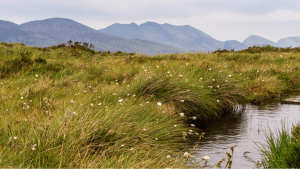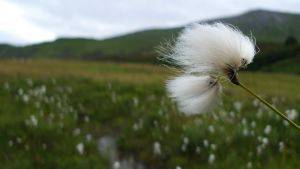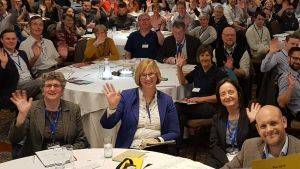Border Mires: Active Blanket Bog Rehabilitation
Introduction
Border Mires is the name given to a collection of peat bog sites in and adjacent to Kielder Forest, of which there are 58 seperate sites. The majority are owned by Forest Enterprise and managed by a group of partners including Northumberland Wildlife Trust.
The Border Mires blanket bog is largely made up of deep lenses of peat, which can be up to 15 m deep in places. The sites in and around Kielder Forest store more water than the reservoir and release it steadily, moderating flows and reducing flash floods.
Description
Home to endangered species including golden plover (Pluvialis apricaria), golden eagle (Aquila chrysaetos) and peregrine falcon (Falco peregrinus), the blanket bog of the Border Mires is located in the uplands of west Northumberland. Bog vegetation dominates the ombrotrophic (rain-fed) peat, with a fairly continuous carpet of Sphagnum. The mires are mostly 200-300m above sea-level, with relatively high rainfall at around 890-1145mm.
In the past, draining for agriculture and afforestation (Kielder Forest is the largest manmade forest in Europe) has encroached onto the peatland, drying it out and degrading the habitat. One benefit however, of being so close to Kielder Forest, is that grazing and burning have been excluded since the forest planting (completed in 1980), so the remaining mire and its vegetation represent one of the better examples in the UK.
EU LIFE funding enabled a partnership of governmental and non-governmental bodies to restore 15 of the mires, which accounted for around 40% of the overall Border Mires.
Restoration Delivered
Overall, around 500 ha of mire have been partially restored as a result of the EU LIFE-funded project. This has improved the status of the site in Habitat Directives terms from 'unfavourable' condition to 'unfavourable-recovering'. It is hoped that in time, this status will improve further as a result of the work.
A large proportion of this project was forest-to-bog restoration, which was fairly innovative at the time, therefore two workshops were held to present the results.
Monitoring work was also carried out to measure the water levels and recovery of the soils and vegetation. Whilst, the short-term nature of the programme meant it was not possible to detect significant changes, early results were encouraging.
Site Activity
Much of the restoration carried out as part of the EU LIFE funding were intended to be non-recurring activities. These activities included the following:
- Blocking of ditches to reinstate the integrity of the bogs' hydrological systems (dams were constructed from a number of materials: elm boards; plywood; plastic sheeting; peat; plastic piling)
- Cutting and removing trees from a 200 ha area to enlarge the blanket bog area (trees were removed in a number of ways: cut and chipped on site; fell to waste; cable crane lift; conventional harvesting; killing standing trees using herbicide)
- Remove naturally regenerating trees from open bog
- Creation of 130 wader pools.
Following this work it is expected that the natural processes of peat formation will eventually reinstate itself,and in time the blanket bog will become self-sustaining.
Biodiversity
Plants such as sundew, cranberry, cotton grasses and Sphagnum mosses are prevalent. Many pools are home to a variety of insects such as the black darter, common hawker and golden-ringed dragonflies. Frogs are frequent, while toads and palmate newts are a little less common. The large heath butterfly is a specialist of these bog sites - June and July are a good time to see them.
Key lessons
- Landscape-scale restoration of blanket bog is possible
- If hydrology can be re-established, recovery can be surprisingly quick.
And more specific to the project, a detailed assessment of the merits of the different technqiues was possible. The project team were also able to estimate the resource requirements to complete bog restoration in Kielder much more accurately.
With 15 sites successfully restored, the Border Mires Management Committee are now faced with the challenge of restoring the remaining 44 sites.
Project partners
Project Name: Border Mires: Active Blanket Bog Rehabilitation
Organisation / Lead partner: Northumberland Wildlife Trust
Location: Kielder Forest, Northumberland
Approximate area covered: 500 ha
Conservation Status: Site of Special Scientific Interest (SSSI), Special Area of Conservation (SAC), RAMSAR site
Predominately: Upland
Peat Habitats: Blanket bog
Project Type: Restoration
Year Project Began: 1998
Project End Date: 2003

